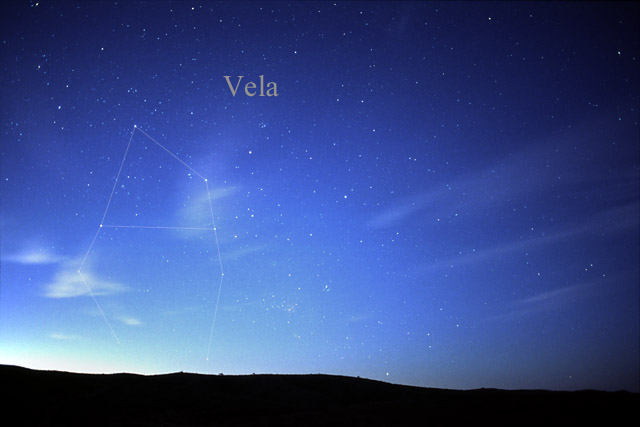|
Coreshine
Coreshine is an astronomical term for infrared light scattered by unusually large grains of dust in the denser core regions of molecular clouds and which evidently begin their growth before the start of cloud collapse. These clouds which are opaque to visible light, are a mixture of gas and dust and are the regions where stars are formed. Coreshine offers a new tool for observing the earliest phases of star formation, a process effectively hidden up to now. The scattered mid-infrared light, found throughout our galaxy, could reveal the origins of the cloud material, the size and density of the dust particles, the age of the core region, the distribution of the dust and gas, and the chemical processes taking place deep inside the cloud. The phenomenon was first studied seriously with NASA’s Spitzer Space Telescope. Researchers Laurent Pagani (CNRS, Paris Observatory), Jürgen Steinacker ( Max Planck Institute for Astronomy) and colleagues from the California Institute of Techn ... [...More Info...] [...Related Items...] OR: [Wikipedia] [Google] [Baidu] |
Infrared
Infrared (IR), sometimes called infrared light, is electromagnetic radiation (EMR) with wavelengths longer than those of visible light. It is therefore invisible to the human eye. IR is generally understood to encompass wavelengths from around 1 millimeter (300 GHz) to the nominal red edge of the visible spectrum, around 700 nanometers (430 THz). Longer IR wavelengths (30 μm-100 μm) are sometimes included as part of the terahertz radiation range. Almost all black-body radiation from objects near room temperature is at infrared wavelengths. As a form of electromagnetic radiation, IR propagates energy and momentum, exerts radiation pressure, and has properties corresponding to both those of a wave and of a particle, the photon. It was long known that fires emit invisible heat; in 1681 the pioneering experimenter Edme Mariotte showed that glass, though transparent to sunlight, obstructed radiant heat. In 1800 the astronomer Sir William Herschel ... [...More Info...] [...Related Items...] OR: [Wikipedia] [Google] [Baidu] |
Molecular Clouds
A molecular cloud, sometimes called a stellar nursery (if star formation is occurring within), is a type of interstellar cloud, the density and size of which permit absorption nebulae, the formation of molecules (most commonly molecular hydrogen, H2), and the formation of H II regions. This is in contrast to other areas of the interstellar medium that contain predominantly ionized gas. Molecular hydrogen is difficult to detect by infrared and radio observations, so the molecule most often used to determine the presence of H2 is carbon monoxide (CO). The ratio between CO luminosity and H2 mass is thought to be constant, although there are reasons to doubt this assumption in observations of some other galaxies. Within molecular clouds are regions with higher density, where much dust and many gas cores reside, called clumps. These clumps are the beginning of star formation if gravitational forces are sufficient to cause the dust and gas to collapse. History The form of molecular ... [...More Info...] [...Related Items...] OR: [Wikipedia] [Google] [Baidu] |
Star Formation
Star formation is the process by which dense regions within molecular clouds in interstellar space, sometimes referred to as "stellar nurseries" or "star-forming regions", collapse and form stars. As a branch of astronomy, star formation includes the study of the interstellar medium (ISM) and giant molecular clouds (GMC) as precursors to the star formation process, and the study of protostars and young stellar objects as its immediate products. It is closely related to planet formation, another branch of astronomy. Star formation theory, as well as accounting for the formation of a single star, must also account for the statistics of binary stars and the initial mass function. Most stars do not form in isolation but as part of a group of stars referred as star clusters or stellar associations. Stellar nurseries Interstellar clouds A spiral galaxy like the Milky Way contains stars, stellar remnants, and a diffuse interstellar medium (ISM) of gas and dust. The inte ... [...More Info...] [...Related Items...] OR: [Wikipedia] [Google] [Baidu] |
NASA
The National Aeronautics and Space Administration (NASA ) is an independent agency of the US federal government responsible for the civil space program, aeronautics research, and space research. NASA was established in 1958, succeeding the National Advisory Committee for Aeronautics (NACA), to give the U.S. space development effort a distinctly civilian orientation, emphasizing peaceful applications in space science. NASA has since led most American space exploration, including Project Mercury, Project Gemini, the 1968-1972 Apollo Moon landing missions, the Skylab space station, and the Space Shuttle. NASA supports the International Space Station and oversees the development of the Orion spacecraft and the Space Launch System for the crewed lunar Artemis program, Commercial Crew spacecraft, and the planned Lunar Gateway space station. The agency is also responsible for the Launch Services Program, which provides oversight of launch operations and countdown m ... [...More Info...] [...Related Items...] OR: [Wikipedia] [Google] [Baidu] |
Spitzer Space Telescope
The Spitzer Space Telescope, formerly the Space Infrared Telescope Facility (SIRTF), was an infrared space telescope launched in 2003. Operations ended on 30 January 2020. Spitzer was the third space telescope dedicated to infrared astronomy, following IRAS (1983) and ISO (1995–1998). It was the first spacecraft to use an Earth-trailing orbit, later used by the Kepler planet-finder. The planned mission period was to be 2.5 years with a pre-launch expectation that the mission could extend to five or slightly more years until the onboard liquid helium supply was exhausted. This occurred on 15 May 2009. Without liquid helium to cool the telescope to the very low temperatures needed to operate, most of the instruments were no longer usable. However, the two shortest-wavelength modules of the IRAC camera continued to operate with the same sensitivity as before the helium was exhausted, and continued to be used into early 2020 in the Spitzer Warm Mission. During the warm missio ... [...More Info...] [...Related Items...] OR: [Wikipedia] [Google] [Baidu] |
CNRS
The French National Centre for Scientific Research (french: link=no, Centre national de la recherche scientifique, CNRS) is the French state research organisation and is the largest fundamental science agency in Europe. In 2016, it employed 31,637 staff, including 11,137 tenured researchers, 13,415 engineers and technical staff, and 7,085 contractual workers. It is headquartered in Paris and has administrative offices in Brussels, Beijing, Tokyo, Singapore, Washington, D.C., Bonn, Moscow, Tunis, Johannesburg, Santiago de Chile, Israel, and New Delhi. From 2009 to 2016, the CNRS was ranked No. 1 worldwide by the SCImago Institutions Rankings (SIR), an international ranking of research-focused institutions, including universities, national research centers, and companies such as Facebook or Google. The CNRS ranked No. 2 between 2017 and 2021, then No. 3 in 2022 in the same SIR, after the Chinese Academy of Sciences and before universities such as Harvard University, MIT ... [...More Info...] [...Related Items...] OR: [Wikipedia] [Google] [Baidu] |
Paris Observatory
The Paris Observatory (french: Observatoire de Paris ), a research institution of the Paris Sciences et Lettres University, is the foremost astronomical observatory of France, and one of the largest astronomical centers in the world. Its historic building is on the Left Bank of the Seine in central Paris, but most of the staff work on a satellite campus in Meudon, a suburb southwest of Paris. The Paris Observatory was founded in 1667. Construction was completed by the early 1670s and coincided with a major push for increased science, and the founding of the Royal Academy of Sciences. King Louis XIV's minister of finance organized a "scientific powerhouse" to increase understanding of astronomy, maritime navigation, and science in general. Through the centuries the Paris Observatory has continued in support of astronomical activities, and in the 21st century connects multiple sites and organizations, supporting astronomy and science, past and present. Constitution Adminis ... [...More Info...] [...Related Items...] OR: [Wikipedia] [Google] [Baidu] |
Max Planck Institute For Astronomy
The Max-Planck-Institut für Astronomie (Max Planck Institute for Astronomy, MPIA) is a research institute of the Max Planck Society (MPG). It is located in Heidelberg, Baden-Württemberg, Germany near the top of the Königstuhl, adjacent to the historic Landessternwarte Heidelberg-Königstuhl astronomical observatory. The institute primarily conducts basic research in the natural sciences in the field of astronomy. In addition to its own astronomical observations and astronomical research, the Institute is also actively involved in the development of observation instruments. The instruments or parts of them are manufactured in the institute's own workshops. History The founding of the institute in 1967 resulted from the insight that a supra-regional institute equipped with powerful telescopes was necessary in order to conduct internationally competitive astronomical research. Hans Elsässer, an astronomer, became the founding director in 1968. In February 1969, a first gro ... [...More Info...] [...Related Items...] OR: [Wikipedia] [Google] [Baidu] |
California Institute Of Technology
The California Institute of Technology (branded as Caltech or CIT)The university itself only spells its short form as "Caltech"; the institution considers other spellings such a"Cal Tech" and "CalTech" incorrect. The institute is also occasionally referred to as "CIT", most notably in its alma mater, but this is uncommon. is a private university, private research university in Pasadena, California. Caltech is ranked among the best and most selective academic institutions in the world, and with an enrollment of approximately 2400 students (acceptance rate of only 5.7%), it is one of the world's most selective universities. The university is known for its strength in science and engineering, and is among a small group of Institute of Technology (United States), institutes of technology in the United States which is primarily devoted to the instruction of pure and applied sciences. The institution was founded as a preparatory and vocational school by Amos G. Throop in 1891 and began ... [...More Info...] [...Related Items...] OR: [Wikipedia] [Google] [Baidu] |
Serpens Cauda
Serpens ( grc, , , the Serpent) is a constellation in the northern celestial hemisphere. One of the 48 constellations listed by the 2nd-century astronomer Ptolemy, it remains one of the 88 modern constellations designated by the International Astronomical Union. It is unique among the modern constellations in being split into two non-contiguous parts, Serpens Caput (Serpent Head) to the west and Serpens Cauda (Serpent Tail) to the east. Between these two halves lies the constellation of Ophiuchus, the "Serpent-Bearer". In figurative representations, the body of the serpent is represented as passing behind Ophiuchus between Mu Serpentis in ''Serpens Caput'' and Nu Serpentis in ''Serpens Cauda''. The brightest star in Serpens is the red giant star Alpha Serpentis, or Unukalhai, in Serpens Caput, with an apparent magnitude of 2.63. Also located in Serpens Caput are the naked-eye globular cluster Messier 5 and the naked-eye variables R Serpentis and Tau4 Serpentis. Notable ... [...More Info...] [...Related Items...] OR: [Wikipedia] [Google] [Baidu] |
Vela (constellation)
Vela is a constellation in the southern sky, which contains the Vela Supercluster. Its name is Latin for the sails of a ship, and it was originally part of a larger constellation, the ship ''Argo Navis'', which was later divided into three parts, the others being Carina and Puppis. With an apparent magnitude of 1.8, its brightest star is the hot blue multiple star Gamma Velorum, one component of which is the brightest Wolf-Rayet star in the sky. Delta and Kappa Velorum, together with Epsilon and Iota Carinae, form the asterism known as the False Cross. 1.95-magnitude Delta is actually a triple or quintuple star system. History Argo Navis was one of the 48 classical constellations listed by the 2nd-century astronomer Ptolemy, and represented the ship ''Argo'', used by Jason and the Argonauts on their quest for the Golden Fleece in Greek mythology. German cartographer Johann Bayer depicted the constellation on his '' Uranometria'' of 1603, and gave the stars Bayer designa ... [...More Info...] [...Related Items...] OR: [Wikipedia] [Google] [Baidu] |




.jpg)


.jpg)

